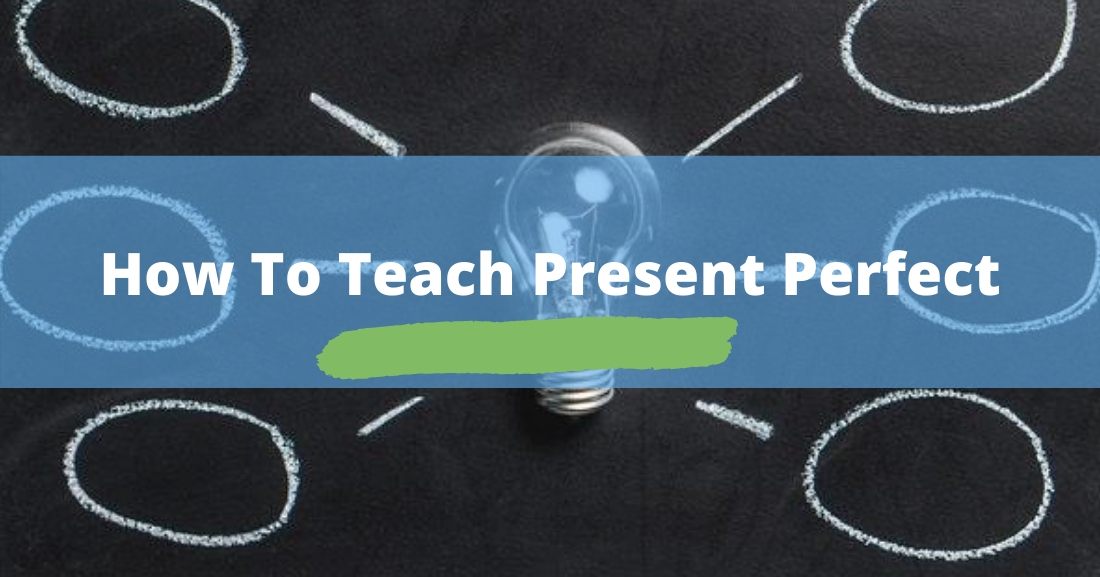
Most ESL teachers come to this hard realization. Most students who have learned English as a second language, effectively use only three tenses: present, past, and future. And they will most likely make themselves understood, but only by resorting to these three. The present perfect is one of those tenses that is soon forgotten, easily replaced by past simple.
But students don't realize just how important it is that they master it. To ensure your students will not let the present perfect slip into oblivion, it must be taught right. This article provides several clear steps that will help you teach the Present Perfect tense.
How To Proceed
-
1
Introduce the Present Perfect – Regular verbs
Give examples in past simple: Yesterday, I had a busy day. I received lots of emails.
Lead in to present perfect: I have received only a few today. Show students how the present perfect is formed: have/has plus the past participle. Tell them that the past participle of regular verbs ends in –ed, just as in simple past. -
2
Contrast finished and unfinished time
One of the best ways to ensure that students understand when the present perfect is used is to contrast finished and unfinished time.
Ask students: Is yesterday finished? (They should say it’s finished.) Ask them: Is today finished? (They should say it isn’t.)
On the board, draw two columns. On the left column write examples of phrases that go with finished time: yesterday, last week, last month, last year, 1990, etc...On the right column, write those that go with unfinished time: today, this week, this month, this year, etc…
Make sure they notice the differences, then, give examples (only with regular verbs) with both tenses: Last month, I visited my grandmother twice. This month, I have only visited her once. But this month is not finished so I may visit her again before the month is over. Provide as many examples as necessary, in all persons, and then ask students to do the same with other regular verbs. Contrast the simple past and present perfect as much as necessary. -
3
Introduce the Present Perfect – Irregular verbs
Proceed with the irregulars. Divide the board into three columns and write some irregular verbs in the first column, their simple past form in the second column, and finally the irregular past participle in the third. Give them examples as you go over each verb:
- I’ve had two cups of coffee today.
- I’ve spoken to John this week.
- I’ve read all four of the Twilight books
-
Make sure students have a list they can use for reference. With the help of the list, they provide more examples with other irregular verbs. -

-
4
Introduce the Present Perfect – Negative forms
Say, “I saw my grandmother last week. I haven’t seen her this week.”
Give more examples alternating between an affirmative in simple past and a negative statement in present perfect: I went to Rome last year, but I haven’t been there this year.
Now, give each of your students just the affirmative statement in simple past and ask them to supply an example in present perfect negative:
T: I was at the bank earlier today.
S: I haven't been to the bank this week.
In this worksheet, students practice the present perfect negative, and you may also introduce the use of yet. -
5
Introduce the Present Perfect – Interrogative forms
Model questions with have or has:
T: Have you seen Twilight?
S: Yes./No.
T: Ask me!
S: Have you seen Twilight?
Continue with more questions from students. Model questions with where and what, but make sure students understand that if they ask questions with when, where and why, they need to use the simple past because they are referring to a specific moment in the past. Write examples on the board. Make sure they ask questions in all persons, both singular and plural. If they are unsure as to how to ask a question, model it for them first. -
6
Introduce the Present Perfect – Short answers
Ask yes or no questions and teach students to give short answers:
T: Have you seen my pen?
S: Yes, I have./No, I haven’t.
Students ask classmates yes or no questions, and classmates reply with short answers. -
7
Provide extended practice
Tell your students that the best way to remember the past participle of irregular verbs is through practice, in both written and oral exercises. At BusyTeacher.org, there are enough Present Perfect worksheets to keep your students practicing for hours!
Naturally, students should be taught all of the other uses of the present perfect, with already, just, ever, never, for, since, etc… For practical purposes, in this guide we cover what should be the best way to introduce the present perfect for the first time, i.e, the distinction between finished and unfinished time. Once they grasp this distinction, they should be ready to grasp everything else.
P.S. If you enjoyed this article, please help spread it by clicking one of those sharing buttons below. And if you are interested in more, you should follow our Facebook page where we share more about creative, non-boring ways to teach English.







